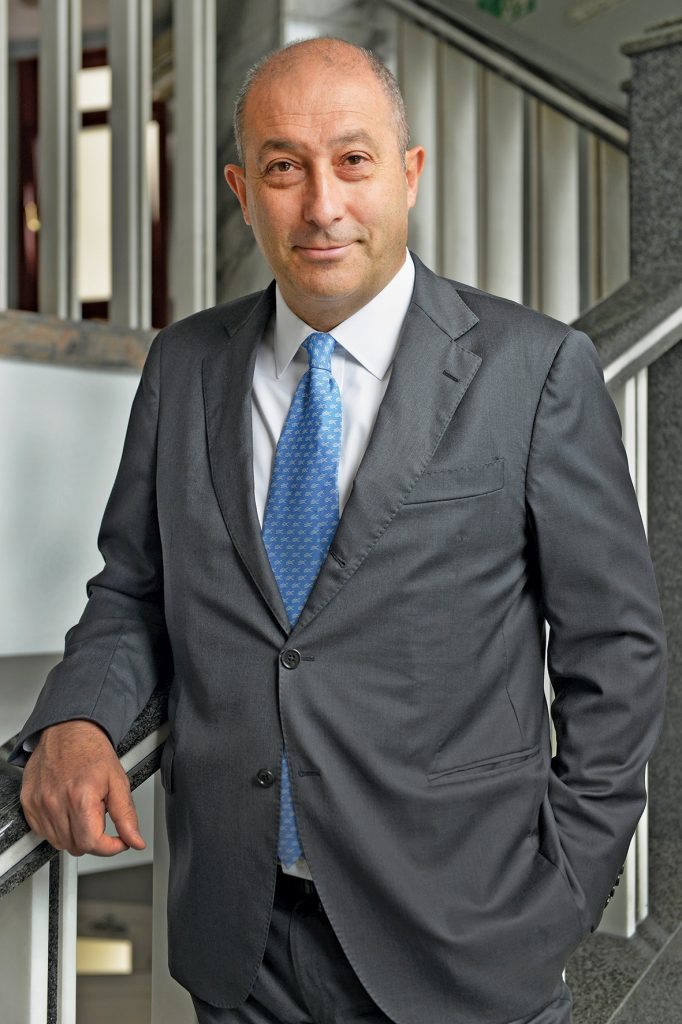From the beginning of the COVID-19 outbreak, Italian companies did not stop and everybody has been fighting against it, mostly successfully.
“Chambers were born as “physical “meeting places when both globalization and safety have turned them into “virtual spaces”. The Italian Chamber is a lean organization, based on networking and information exchange, hence, when the Serbian government declared the state of emergency, it was easy to switch to remote work. The Italian Chamber is also part of a system of around 80 chambers that Italy has worldwide. They share practices and solutions, particularly in Europe. During the past months, they were very active in supporting their members in facing the emergency,” the President of the Italian-Serbian Chamber of Commerce (CCIS) and CEO of DDOR, Giorgio Marchegiani says in an interview in which he also talks about business activities of the Italian-Serbian Chamber of Commerce.

Mr. Marchegiani, economic relations between Italy and Serbia have a long-standing structure. What is the situation before, during and post COVID-19?
I recently did a quantitative analysis to get a full picture of the Italian economic presence in Serbia and it is impressive – the key figures are 600+ companies with active and significant activity and more than 35,000 employees plus another 15.000 in strictly connected local suppliers. From the beginning of the COVID-19 outbreak, these companies did not stop, but everybody has been fighting it, mostly successfully. These numbers represent the picture of a strong partnership. There are also some non- numerical strengths, which makes this partnership a special one. I’ll talk about them later.
“Over time, we have observed a change in the type of investments, moving from labour intensive ones to more capital intensive and from manufacturing to services”
Italian companies have never stopped coming to Serbia. Which kind of companies are arriving in Serbia currently and how is this post-COVID flow expected to evolve?
The presence of Italian companies is very dynamic and it is the result of 20 years of investment flow, ranging across all industries. Over time, we have observed a change in the type of investments, moving from labour intensive ones to more capital intensive and from manufacturing to services. This mirrors the country’s evolution but also means that Serbia is a partner economy, in which small service companies are also investing, as part of an ecosystem led by large companies. This year is peculiar because travelling is difficult, but the long term trend will not change – more companies will come, and the focus will remain on SMEs and wider diffusion of Italian style. We are also entering a new development phase in the country, where the “Made in Italy” label becomes an aspirational element; in fashion, food and furniture. This all will generate growth of the bilateral trade over the next decades.
“In the next 3-4 years, more locations will become very appealing to manufacturers due to the improved logistics, including the link to the Adriatic”
Which are the favourite Serbian regions for the Italian companies to invest and why?
From our analysis, we saw a widespread presence (of Italian companies), ranging from Subotica to Vranje and from Loznica to Kladovo. Historically speaking, some clusters are chosen more frequently like Vojvodina and its Bačka and Srem counties. Then there is the area of Kragujevac and Jagodina, as well as Šabac and southern Serbia, near Vranje. Of course, we should mention Belgrade. The choices partly depend on the timing of the investment, on certain local incentives or on the proximity to “anchor” companies, like in the case of Fiat. I can say that the motorway network has been expanding lately, particularly with the construction of the Miloš Veliki motorway and the completion of the road to Bulgaria and North Macedonia. More developments are expected in Vojvodina and further down south, in Čačak. In the next 3-4 years, more locations will become very appealing to manufacturers due to the improved logistics, including the link to the Adriatic.
Which sectors do you expect to see a bigger expansion in Serbia?
I think that Serbia is attractive for a wide range of companies. Bearing in mind the structure of Italian companies, I would expect SMEs that are manufacturers, service companies (including IT and distributors) and agri-food companies to come in large numbers. By the way, I also expect a sustained flow of Serbian companies doing business with Italy. Serbia has some very interesting SMEs, for example, in the packaging industry and of course, the IT.
“Culture plays an important role in our country’s values”
Why is Italy considered a special partner to Serbia?
Culture plays an important role in our country’s values. I like to say that a key part of the “Sistema Italia in Serbia” is the exchange of culture. This also includes a non-economic exchange like music, dance, fine arts, exhibitions…. And, of course, food. This is a unique set of activities which expands the partnership between Italy and Serbia from only production and investment to include lifestyle. And make it very special in the process.